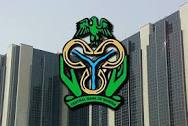CBN’s Bold Move: Navigating Nigeria’s Economic Recovery

Apex bank in its recent MPC decisions strikes a delicate balance between stimulating economic growth and maintaining price stability
The Central Bank of Nigeria’s recent monetary policy decisions have sent a strong signal to the economic landscape, sparking debates and expectations about the country’s future growth trajectory. At the heart of these decisions is the apex bank’s effort to strike a delicate balance between stimulating economic growth and maintaining price stability.
The Monetary Policy Rate (MPR) was reduced by 50 basis points to 27% while it adjusted the Cash Reserve Ratio (CRR) for commercial banks to 45%, while retaining the CRR for merchant banks at 16%. It also imposed a new CRR to the tune of 75% on non-public sector deposits to curb excess liquidity and adjusted the asymmetric corridor around the MPR to +250/-250 basis points, and the liquidity ratio remains unchanged at 30%
The Central Bank of Nigeria’s 50 basis point cut is expected to stimulate economic growth by lowering borrowing costs and increasing access to credit for businesses and individuals. This move signals a shift in policy direction as inflationary pressures ease, with the CBN aiming to balance growth support with price stability. Key implications include reduced interest rates on loans, potentially boosting investment and spending, and increased liquidity in the economy.
By reducing the CRR, the CBN aims to free up more liquidity in the banking system, allowing banks to lend more to businesses and individuals. This move is expected to increase credit availability and stimulate economic growth, while also encouraging banks to lend to productive sectors of the economy.
The introduction of a 75% CRR on non-Treasury Single Account (TSA) public sector deposits is a measure aimed at managing excess liquidity in the banking system. By holding 75% of public sector deposits that are not part of the TSA in reserve, the CBN aims to reduce the amount of money available for lending and spending, thereby preventing overheating of the economy and mitigating potential inflationary pressures.
The CBN’s decision to maintain the liquidity ratio at 30% ensures that banks have sufficient liquidity to meet their short-term obligations, preventing liquidity crises and maintaining financial stability. This move also encourages banks to manage their liquidity prudently, reducing the risk of financial instability.
Finally, the adjustment of the asymmetric corridor to +250/-250 basis points around the MPR provides more flexibility to commercial banks in managing their liquidity. This move is expected to encourage interbank lending and borrowing, enhancing the transmission of monetary policy decisions to the broader economy
The Monetary Policy Committee’s (MPC) decisions are always informed by a careful consideration of various macroeconomic indicators and trends. In its latest meeting, the MPC expressed satisfaction with the prevailing macroeconomic stability, citing improvements in several key indicators. The sustained disinflation, improved output growth, stable exchange rate, and robust external reserves all point to a stabilizing economy.
The MPC noted that the increased momentum of disinflation in August 2025 was underpinned by monetary policy tightening, exchange rate stability, increased capital inflows, and surplus current account balance. These factors have helped to broadly anchor inflation expectations, providing a solid foundation for further economic growth.
However, the Committee also observed the persistent build-up of excess liquidity in the banking system, resulting largely from fiscal releases emerging from improved revenues. This excess liquidity poses a risk to macroeconomic stability, and the MPC has taken steps to address it, including adjusting the width of the standing facilities corridor to boost interbank market transactions and enhance market stability.
The MPC’s considerations also highlighted the importance of the foreign exchange market in achieving rapid disinflation. The Committee called on the Bank to continue implementing policies that would further boost capital inflows and deepen foreign exchange liquidity.
In the financial sector, the MPC noted the continued resilience of the banking system, with most financial soundness indicators remaining within prudential benchmarks. The Committee also acknowledged the significant progress in the ongoing bank recapitalization exercise, with 14 banks having fully met the new capital requirement.
The MPC’s decisions demonstrate a delicate balance between supporting economic recovery and preserving macroeconomic stability. By carefully considering various indicators and trends, the Committee has taken a proactive approach to monetary policy, ensuring that the economy remains on a stable path. As the economy continues to evolve, the MPC’s commitment to data-driven decision-making will remain essential in navigating the complexities of monetary policy.
The Nigerian economy has demonstrated remarkable resilience in recent times, with key indicators pointing towards sustained growth and stability. According to the latest data, headline inflation moderated further to 20.12% in August 2025, driven by declines in both food and core inflation. This trend is a welcome development, as it suggests that the economy is responding positively to the monetary policy measures implemented by the Central Bank of Nigeria (CBN).
The decline in inflation was driven by a slowdown in the cost of services, housing, and utilities, as well as transport and logistics. Food inflation also moderated, attributed to the decline in the prices of staples such as rice, guinea corn, maize, and millet. These developments are expected to provide relief to households and businesses, and support the overall growth of the economy.
The Nigerian economy’s resilience is also reflected in its robust growth rate. The recently released GDP data for the second quarter of 2025 showed a real growth rate of 4.23% year-on-year, compared to 3.13% in the first quarter of 2025. This growth was driven by a significant improvement in the performance of the oil sector, which grew by 20.46% compared to 1.87% in the preceding quarter. This positive development is expected to further bolster foreign exchange reserves and sustain stability in the foreign exchange market.
The CBN’s efforts to promote economic stability have yielded positive results. Gross external reserves remained robust at $43.05 billion, with an import cover of 8.28 months. The current account balance also recorded a significant surplus of $5.28 billion in Q2 2025. These developments suggest that the economy is on a stable path, and the CBN’s policies are supporting growth and stability.
Overall, the Nigerian economy’s resilience amidst global uncertainty is a testament to the effectiveness of the CBN’s monetary policy measures. As the economy continues to grow and stabilize, it is essential to maintain the momentum of security efforts across the country to increase oil output and food production. With the right policies and strategies in place, Nigeria’s economy is poised for sustained growth and development.
Global developments are shaping the world in complex ways, influencing economic growth, sustainability, and human well-being. The global economy is expected to improve, driven by favorable trade negotiations and monetary policy easing, particularly in advanced economies. However, persistent geopolitical tensions and lingering trade uncertainties could disrupt global supply chains and dampen the outlook. Global inflation is projected to sustain its deceleration, albeit at a slower pace, due to the impact of trade tariffs and other structural challenges.
This trajectory has necessitated a cautious and data-dependent approach to monetary policy easing by central banks, especially in emerging markets and developing economies. As the global economy navigates these challenges, it’s essential to prioritize sustainable development, address pressing issues like poverty and inequality, and promote inclusive economic growth. By understanding these global trends and challenges, we can better appreciate the complexities of the world economy and the need for cooperation and innovation to drive progress.
The CBN’s decisions are expected to have a positive impact on the economy, driven by several key expectations. Firstly, the lower Monetary Policy Rate (MPR) and reduced Cash Reserve Requirement (CRR) are expected to improve credit conditions, expanding banks’ capacity to create credit and making financing more accessible for businesses. This, in turn, is expected to encourage new investments, support business expansion, and enhance capacity utilization in the real sector. Ultimately, the CBN’s efforts aim to stimulate output growth and job creation, contributing to sustainable economic development. Experts, such as Muda Yusuf, CEO of the Centre for the Promotion of Private Enterprise (CPPE), welcome the CBN’s decision, noting that it will ease credit conditions, lower borrowing costs, and unlock capital for businesses. However, they also stress the need for fiscal authorities to complement the monetary easing with structural reforms, including infrastructure investment, security improvements, and policies to boost productivity.
The Central Bank of Nigeria (CBN) has undergone significant transformations under the leadership of Governor Yemi Cardoso, focusing on restoring confidence, strengthening governance, and repositioning the financial system to support inclusive and sustainable economic growth. Key initiatives include foreign exchange reforms, which liberalized and unified the FX market, reducing opportunities for arbitrage and corruption while improving liquidity. The CBN also introduced recapitalization measures to enhance banking sector resilience and strengthened regulatory frameworks to safeguard stability against global and domestic shocks




